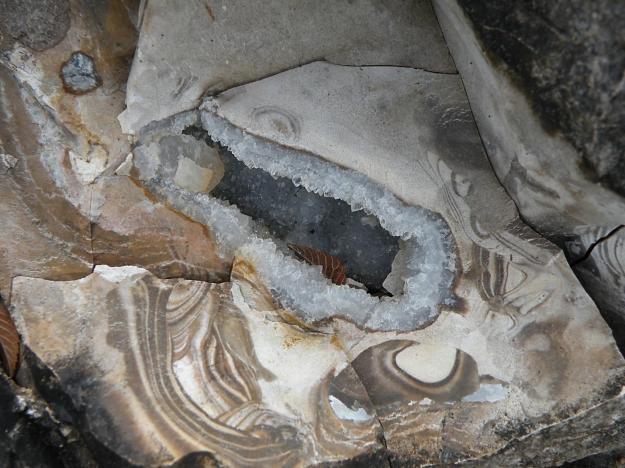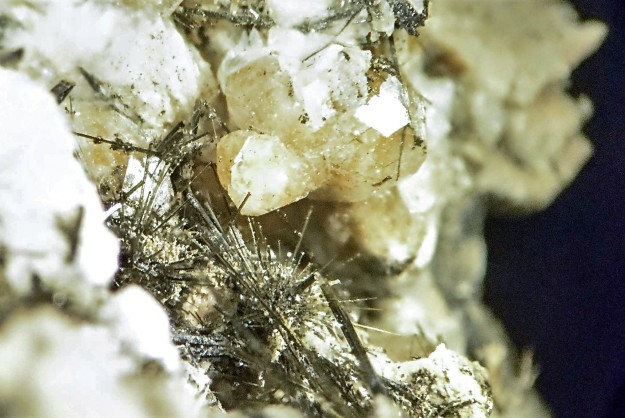
Pictured above is a mineralized vug (approximately 3 inches long) in chert. A vug is a void or open space in a rock. Many vugs are filled with minerals after water that is saturated with a certain mineral flows through the rock. This mineralization can happen in multiple stages. The vug above was initially filled with silica-rich fluid therefore quartz precipitated out of solution and lined the walls of the vug. Afterwards calcite precipitated, as is evident from the larger crystal on the interior left of the vug.
This vug is present in a section of ornamentally banded chert. Chert is a sedimentary rock made up of microcrystalline quartz. It can be a variety of colors or banded and quite beautiful. The chert above is Devonian age (416-359 million years ago) from northwest Arkansas.

 (FOV approx. 2 mm, photo by Corbin Cannon)
(FOV approx. 2 mm, photo by Corbin Cannon)